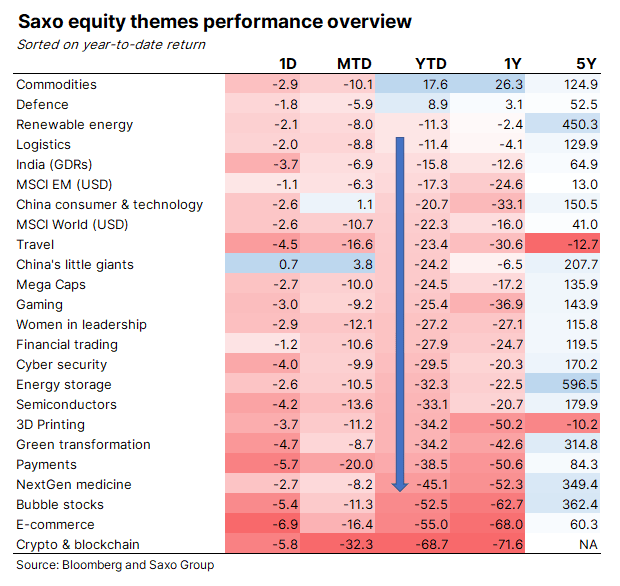Disclaimer Saxo Capital Markets (Australia) Limited prepares and distributes information/research produced within the Saxo Bank Group for informational purposes only. In addition to the disclaimer below, if any general advice is provided, such advice does not take into account your individual objectives, financial situation or needs. You should consider the appropriateness of trading any financial instrument as trading can result in losses that exceed your initial investment. Please refer to our Analysis Disclaimer, and our Financial Services Guide and Product Disclosure Statement. All legal documentation and disclaimers can be found at https://www.home.saxo/en-au/legal/.
The Saxo Bank Group entities each provide execution-only service. Access and use of Saxo News & Research and any Saxo Bank Group website are subject to (i) the Terms of Use; (ii) the full Disclaimer; and (iii) the Risk Warning in addition (where relevant) to the terms governing the use of the website of a member of the Saxo Bank Group.
Saxo News & Research is provided for informational purposes, does not contain (and should not be construed as containing) financial, investment, tax or trading advice or advice of any sort offered, recommended or endorsed by Saxo Bank Group and should not be construed as a record of our trading prices, or as an offer, incentive or solicitation for the subscription, sale or purchase in any financial instrument. No representation or warranty is given as to the accuracy or completeness of this information. All trading or investments you make must be pursuant to your own unprompted and informed self-directed decision. No Saxo Bank Group entity shall be liable for any losses that you may sustain as a result of any investment decision made in reliance on information on Saxo News & Research.
To the extent that any content is construed as investment research, such content was not intended to and has not been prepared in accordance with legal requirements designed to promote the independence of investment research and as such, would be considered as a marketing communication.
None of the information contained here constitutes an offer to purchase or sell a financial instrument, or to make any investments.Saxo Capital Markets does not take into account your personal investment objectives or financial situation and makes no representation and assumes no liability as to the accuracy or completeness of the information nor for any loss arising from any investment made in reliance of this presentation. Any opinions made are subject to change and may be personal to the author. These may not necessarily reflect the opinion of Saxo Capital Markets or its affiliates.
Please read our disclaimers:
- Full Disclaimer (https://www.home.saxo/en-au/legal/disclaimer/saxo-disclaimer)
- Analysis Disclaimer (https://www.home.saxo/en-au/legal/analysis-disclaimer/saxo-analysis-disclaimer)
- Notification on Non-Independent Investment Research (https://www.home.saxo/legal/niird/notification)
